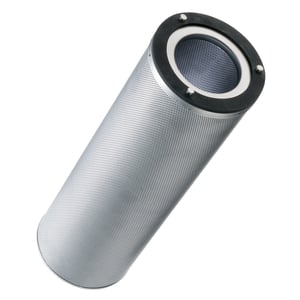
• the ingredients used, (onion, garlic, spices)
• type of food being cooked, (hamburger, pizza, steak)
• the cooking method (grilling, BBQ, boiling)
The emissions from a kitchen include a range of particle sizes, from coarse to very fine smoke, oil and grease aerosols and molecular pollutants. The molecular pollutants are mostly responsible for odour. However, very fine particles and aerosols can also trigger an odour response if they reach the receptor cells in the nasal passages. There is a recognised method called Olfactometry, implemented as a European Standard (EN13725) for measuring the characteristics and strength of a smell or odour.
To eliminate 'the stink' in the indoor air, an effective kitchen exhaust filtration system based upon molecular filtration is the key. The kitchen ventilation system should be designed to prevent condensing atmospheres in the exhaust duct, upstream of the filters.
Particle filtration has two purposes – removing fine particles that can trigger odour response, and protecting the molecular filter.
Molecular filtration uses microporous activated carbon. This media has a large internal-surface to volume ratio and is highly adsorptive, perfect for removing odour molecules from indoor air. Restaurant odours are extremely varied and it is complex to identify the different molecules responsible for the odour. Activated carbon is a broad-spectrum adsorbent and can be used with confidence, without the need for expensive air analysis.
For the relatively small number of molecules that cannot be controlled using broad spectrum media, there are surface-modified or "impregnated" carbons that are intended to specifically adsorb an individual molecule or family of molecules. Activated carbon can be made from different raw materials, in different qualities, shapes, and sizes that can target a wide range of odours, irritants and toxic gases, such as volatile organic compounds (VOC), nitrogen dioxide or ozone. There are very many commercially available adsorbents, they are typically made from activated carbon or activated alumina. Everyone will behave differently towards each of the different molecules in the air. A successful molecular filtration solution will always be fundamentally dependent on the selection of the most appropriate adsorbent. The expert staff in the Camfil molecular filtration test laboratory ensure correct selections are always made.
Many restaurants who want to reopen after a halt or temporary shutdown should follow the following steps,
a) If the pre-filters had been installed for a significant period before lockdown (such as 1 month or more), then replace all pre-filters. With organic food particles and grease contamination, they will be likely breeding grounds for microorganisms such as bacteria, mould, fungus.
b) Ensure to physically inspect the molecular filters and if they appear clean and normal, then continue to use. If they are contaminated in any way, a replacement is a must.
The efficiency of a molecular filter for odour control application can be measured using olfactometry according to EN13725. There are experts at Camfil, who can validate the performance of these solutions with the cooperation of external consultants proficient in this area.
Pro-tip - Kitchen odour filters are most effective at lower temperatures, if practical, it is a good practice to install them remotely from the kitchen.
30/30 Panel Filter - This filter has been designed strong to last longer and reduce the number of panel filter change outs. The extra filter media allows for greater dust holding capacity. The Water resistant frame helps protect the filter in moist environments.
Dual10 - The frame is made of water-resistant frame board and has a high tensile strength. It designed to withstand turbulent or harsh airflow that is common in some HVAC systems. The new media technology with dual layered media combines two filtration layers provides a higher dust holding capacity. The media is backed with welded steel grid with corrosion inhibitor to hold the pleat formation throughout service life.
(Hi-Flo, Opakfil/Durafil, Absolute) – Camfil fine or secondary filters will protect the molecular filtration stage from damage caused by very small particles and oil/grease aerosols. They will also contribute to the overall odour removal efficiency in their own right since extremely small particles are known to be capable of triggering an odour response if they reach the receptors cells in the nose.
CamCarb CG & CM - CamCarb CG and CM canisters are thin-bed, loose-fill filters. They provide optimum removal of moderate concentrations of molecular contamination in outdoor air, recirculation air and exhaust air applications. CamCarb cylinders are noted for their extremely low leakage rates.
CamCarb PM - CamCarb panels are a versatile range of thin-bed loose-filled products in different form factors to suit a wide range of air handling units and housings. CamCarb may be used in a wide range of outdoor air, recirculation air and exhaust air applications, for moderate concentrations of molecular (gaseous) contaminants.
Camfil's wide range of products suitable for the restaurant will ensure to remove the odour nuisance from the kitchen






